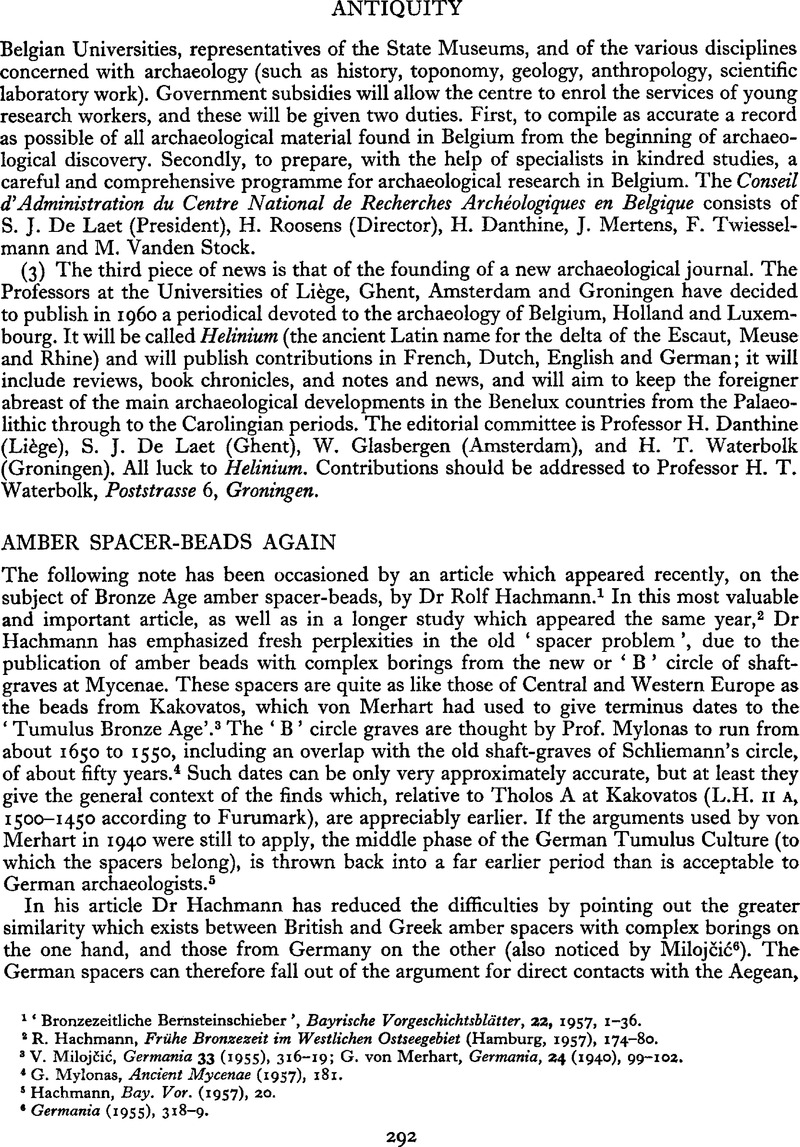Published online by Cambridge University Press: 02 January 2015

1 ‘Bronzezeitliche Bernsteinschieber’, Bayrische Vorgeschichtsblätter, 22, 1957, 1–36.
2 R. Hachrnann, Frühe Bronzezeit im Westlichen Ostseegebiet (Hamburg, 1957), 174–80.
3 V. Milojčić, Germania 33 (1955), 316–19; G. von Merhart, Germania, 24 (1940), 99–102.
4 G. Mylonas, Ancient Mycenae (1957)' 181.
5 Hachmann, Bay. Vor. (1957), 20.
6 Germania (1955), 318–9.
7 ‘In Hachmann’s list they are numbered: 2, 5–8, 10, 11, 17, 19, 20, 22, 23, 34–36, 39–42, 45, 51.
8 The proportions are, 11 of the selected ’basic pattern’ against 13 of all others, taken from Hachmann’s illustrations, along with those published by the writer in Bronze Age Cultures in France, 1957, fig. 16, and based on information from Prof. Piggott.
9 Hachmann, Bay. Vor., 1957, fig. 11, 21 and 15.
10 The importance of the ordinary V-bored bead to the problem of the complex spacers had occurred independently to Mr T. G. E. Powell, with whom I have had useful discussions of this matter since.
11 ‘The Khaniale Tekke Tholos’, BSA, XLIX (1954), 212, 226, pl. 28, 51.
12 C. Becker, Acta Archaeologia, 25 (1954), 241–52, see particularly figs. 3 and 5; M. Gimbutas, The Prehistory of Eastern Europe (1956), pl. 26, an amber ‘wristguard’ or plaque with a row of V-borings from Juodkramte, Lithuania, also Zlota graves, pls. 36, 37, Poland.
13 J. Amal, BSPF, LI (1954), 255–68; S. Piggott, PPS, N.S. IV, pt. I (1938), 52–106, fig. 12, 5; the number and varieties are great.
14 Sandars, Bronze Age Cultures, 72–4, fig. 16.
15 cf. Hachmann, Buy. Vor. (1957), fig. 7, 18, 30 and fig. 6, 1I.